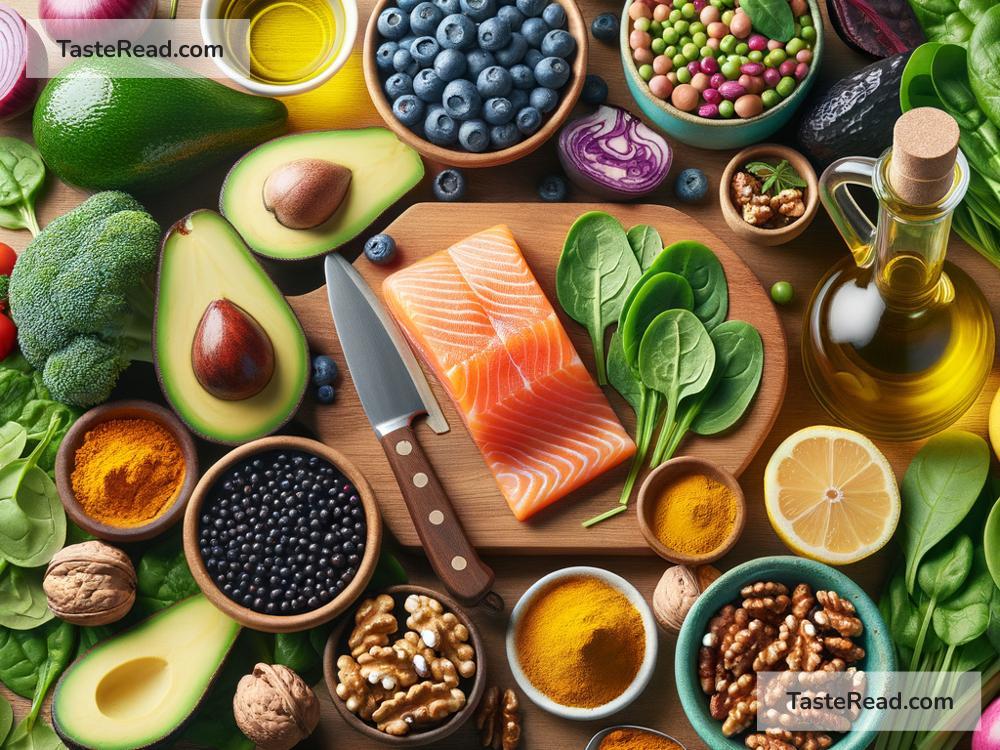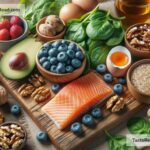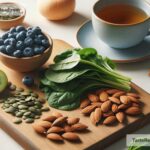Foods That Help Reduce Lipotoxicity
Lipotoxicity may not be a term you hear every day, but it’s something that affects your health more than you might realize. In simple terms, lipotoxicity happens when certain types of fats accumulate in organs like the liver, pancreas, and heart, causing damage to those organs. Over time, this can lead to serious health issues such as fatty liver disease, type 2 diabetes, and cardiovascular problems.
The good news is that your food choices can play a big role in managing lipotoxicity and improving overall health. Certain foods can help reduce fat build-up in your organs and promote better functioning. In this article, we’ll explore some of the best foods you can add to your diet to combat lipotoxicity, explained in plain and simple language.
The Role of Food in Fighting Lipotoxicity
What you eat matters because certain nutrients can promote fat metabolism, reduce inflammation, and improve the function of your liver and pancreas. These three factors are key when combating lipotoxicity. Foods that are rich in fiber, healthy fats, antioxidants, and plant compounds are particularly helpful.
1. Leafy Green Vegetables
Leafy greens like spinach, kale, and broccoli are packed with antioxidants and fiber. Antioxidants help your body fight against cell damage caused by fat build-up, while fiber supports digestion and helps reduce fat absorption. Eating more leafy greens may also lower the fat content in your liver over time.
How to add them to your diet? Try a spinach salad, sauté kale as a side dish, or blend broccoli into your smoothies.
2. Fatty Fish
Fatty fish like salmon, mackerel, and sardines are loaded with omega-3 fatty acids—a type of healthy fat that can decrease inflammation in your body. Inflammation is a big contributor to lipotoxicity, making omega-3-rich foods particularly useful. These healthy fats also improve how your body processes and uses stored fat, reducing its harmful effects.
Eat fatty fish twice a week to get the benefits. You can grill salmon for dinner, add mackerel to your pasta, or snack on sardines with whole-grain crackers.
3. Whole Grains
Whole grains such as oats, brown rice, and quinoa are excellent sources of fiber and vitamins. Fiber slows the digestion process, helping you feel fuller and reducing fat storage in your organs. Whole grains also stabilize blood sugar levels, which lowers the risk of type 2 diabetes—a condition often tied to lipotoxicity.
Swap refined grains like white bread for whole-grain options. Enjoy oatmeal for breakfast, make brown rice bowls for lunch, or use quinoa as a base for your salads.
4. Nuts and Seeds
Nuts and seeds like almonds, walnuts, chia seeds, and flaxseeds contain healthy fats, antioxidants, and essential nutrients like magnesium. Not only do these foods support heart health, but they also help your body break down and use fat more efficiently, reducing fat build-up in your liver and other organs.
Snack on a handful of nuts during the day, sprinkle chia seeds in your yogurt, or use ground flaxseeds in smoothies or baking.
5. Berries
Strawberries, blueberries, raspberries, and other berries are rich in antioxidants that protect your body from the damaging effects of fat accumulation. They also contain plant compounds called polyphenols, which can improve how your liver handles fats.
Snack on berries fresh, mix them into your oatmeal, or enjoy them as desserts with a light drizzle of honey.
6. Avocado
Avocado is a superstar when it comes to healthy fats. It contains monounsaturated fats, which help reduce inflammation and improve fat metabolism. Avocado is also rich in fiber, further aiding digestion and reducing fat build-up in organs.
Add avocado slices to your salads, mash it into guacamole, or spread it on whole-grain toast for a heart-healthy snack.
7. Garlic
Garlic has been shown to reduce fat levels in the liver and lower overall cholesterol. It contains compounds that boost your body’s ability to remove excess fats and toxins. Plus, it’s great for reducing inflammation—a key factor in combating lipotoxicity.
Add garlic to your stir-fries, soups, or roasted vegetables for flavor and health benefits.
8. Green Tea
Green tea is rich in antioxidants called catechins. These antioxidants help your body burn fat and reduce fat build-up in the liver. Drinking green tea regularly can also improve insulin sensitivity, reducing the risk of type 2 diabetes.
Enjoy a cup of green tea in the morning instead of coffee or sip it during the afternoon for a boost of antioxidants.
Conclusion
Lipotoxicity can have serious consequences for your health, but one of the simplest ways to fight it is by making healthy food choices. Focus on eating whole, nutrient-rich foods like leafy greens, fatty fish, whole grains, nuts, berries, avocado, garlic, and green tea. These foods not only help reduce harmful fat accumulation in your organs but also improve your overall health and prevent related conditions like diabetes and heart disease.
Remember, diet is just one piece of the puzzle. Regular exercise, stress management, and proper sleep also play important roles in reducing lipotoxicity. Start small by incorporating a few of these foods into your meals—your body will thank you for it!


